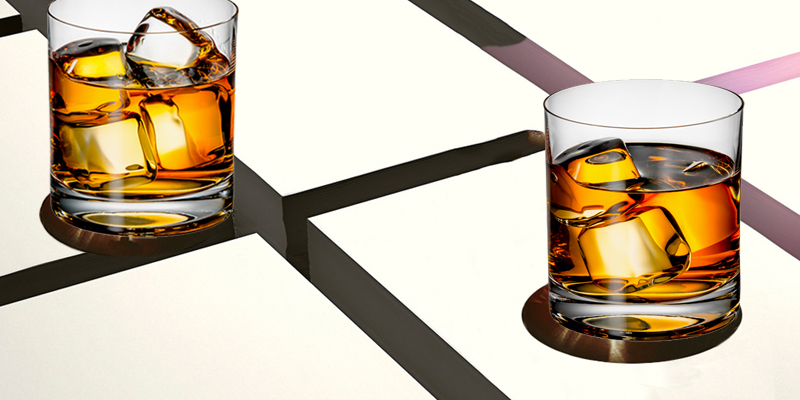
Move over, Scotch. We’re zoning in on American distilled spirits, breaking down the two biggest and baddest of them all — bourbon and rye. Aside from knowing that we love them both, there are many similarities between these two whiskeys, as well as some solid differences that set them apart. So what’s the difference? Let us break it down:
The biggest difference between bourbon and rye comes right in the beginning — raw materials. For bourbon, the grain mixture, otherwise known as the mash bill, must be at least 51 percent corn, while for American rye whiskey, it must be at least 51 percent rye. The remaining (up to) 49 percent in both mash bills may come from a combination of grains, including barley, corn and rye.
From a production standpoint, both bourbon and rye mash bills are then ground and mixed with water. In bourbon production, the next step generally taken, though not always used, is sour mashing, which involves adding some mash from a previous distillation into the mix to ensure consistency (this doesn’t happen with rye). Both bourbon and rye mashes then get an addition of yeast and begin to ferment. After fermentation, this sort of non-carbonated beer is distilled in continuous stills.
Then it’s barrel time. Both spirits start out clear in color and then gain their pigment from caramelized sugars in newly charred American oak barrels. One similarity they have is that neither bourbon nor American rye whiskey may be distilled higher than 160 proof, with 125 proof the max on entering barrel for aging. The whiskeys are then filtered, diluted with water and bottled at a minimum of 40 percent ABV. Bottles sold as “barrel proof” have generally not been diluted and are a higher proof.
But rye gets a little tricky when the conversation turns to Canadian rye Whisky. Ironically, there is no mandate for rye to be used in the making of Canadian rye whisky, as long as the spirit exhibits the general bouquet and taste of Canadian whisky. Most of the whiskies produced are from blended mash bills and are higher in proof. The whisky must be aged in wooden barrels for at least three years. In comparison, general bulk whisky produced in the U.S. has no aging requirements. So basically, Canadian rye isn’t really rye, at least if you take the purists’ definition.
The greatest difference in these two delicious spirits, aside from base ingredients in bourbon and rye, is their taste profiles. And these differing flavor profiles stem from their base ingredients. Bourbons tend to be more sweet and caramel-like due to their corn base, while rye grains lend a spicier, more savory note to the whiskey. In classic cocktail production, rye was typically used over bourbon since many cocktails call for sugar or the blending of whiskey with sweeter liquors; using bourbon, therefore, could result in the cocktail being too cloying. But with bourbon’s growing popularity, it has begun to replace its spicier counterpart in Manhattans, old fashioneds and whiskey sours.

